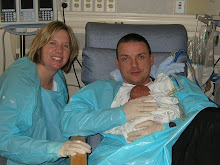The LTP Procedure in More Detail
A LTP is now considered the mainstay for the treatment of severe subglottic and tracheal stenosis. Cartilage is harvested from the sixth to eighth rib. The cartilage is shaped and then sewn into the cartilage edges of the tracheal incision (figure 2). This opens the airway substantially to allow greater allow flow. For severe lesions, in addition to an anterior (front) graft, a posterior (back) graft of cartilage can be sewn into place. As this is the patient's own tissue, the rib cartilage grows as the patient and trachea grow.
The initial procedure may include decannulation (removal of tracheotomy tube). If this is planned, the patient remains intubated with an endotracheal tube, ventilated by a respirator and sedated for several days. This allows time for the graft to strengthen and heal. Extubation (removal of the endotracheal tube) will follow. This sometimes requires a follow up visit to the operating room.
If the LTP does not include decannulation initially, a tracheal stent is inserted to support the graft. This stent is made of silastic, which is flexible and open. The stent is modified in order to accommodate the placement of the patient's tracheotomy tube in front and below it (Figure 3). The patient may be ventilated through the tracheotomy tube postoperatively for a few days. This LTP approach includes stent removal and possible decannulation 6-8 weeks after the initial procedure.
A LTP is now considered the mainstay for the treatment of severe subglottic and tracheal stenosis. Cartilage is harvested from the sixth to eighth rib. The cartilage is shaped and then sewn into the cartilage edges of the tracheal incision (figure 2). This opens the airway substantially to allow greater allow flow. For severe lesions, in addition to an anterior (front) graft, a posterior (back) graft of cartilage can be sewn into place. As this is the patient's own tissue, the rib cartilage grows as the patient and trachea grow.
The initial procedure may include decannulation (removal of tracheotomy tube). If this is planned, the patient remains intubated with an endotracheal tube, ventilated by a respirator and sedated for several days. This allows time for the graft to strengthen and heal. Extubation (removal of the endotracheal tube) will follow. This sometimes requires a follow up visit to the operating room.
If the LTP does not include decannulation initially, a tracheal stent is inserted to support the graft. This stent is made of silastic, which is flexible and open. The stent is modified in order to accommodate the placement of the patient's tracheotomy tube in front and below it (Figure 3). The patient may be ventilated through the tracheotomy tube postoperatively for a few days. This LTP approach includes stent removal and possible decannulation 6-8 weeks after the initial procedure.






No comments:
Post a Comment